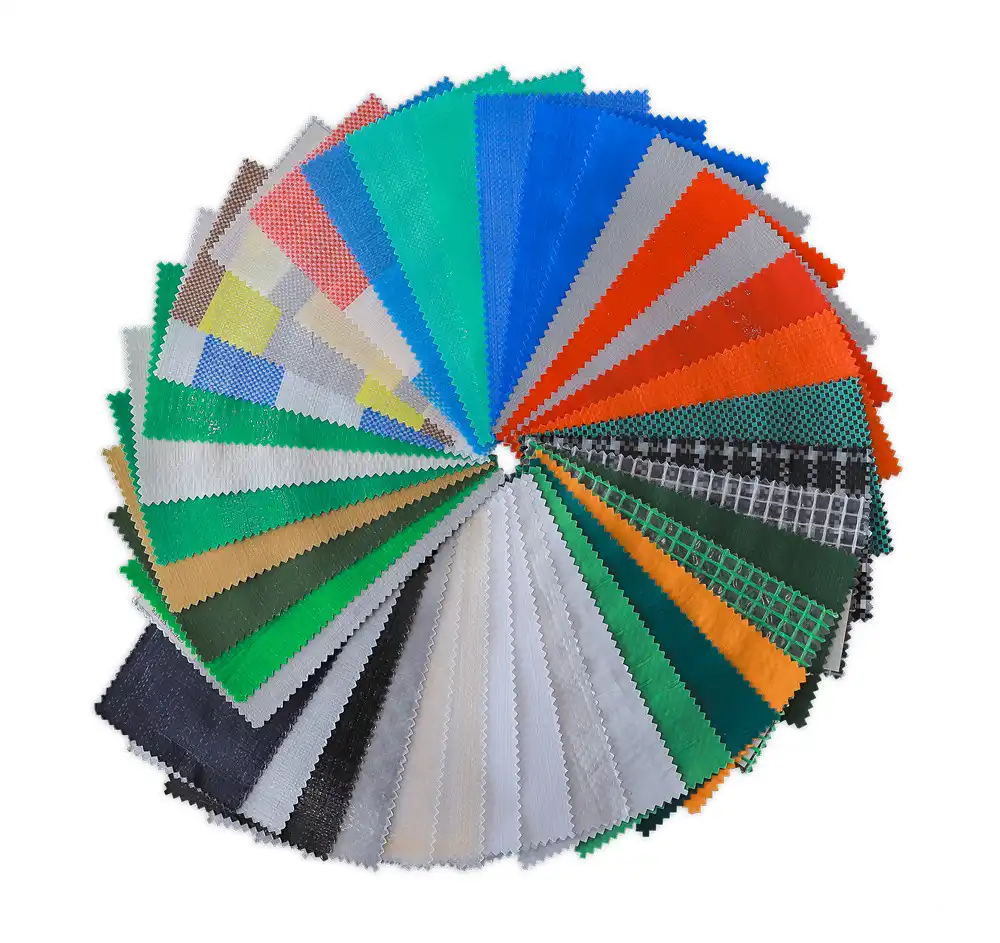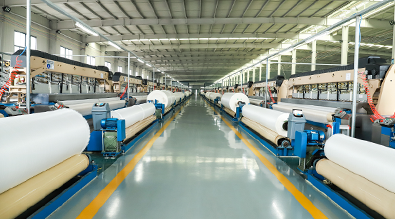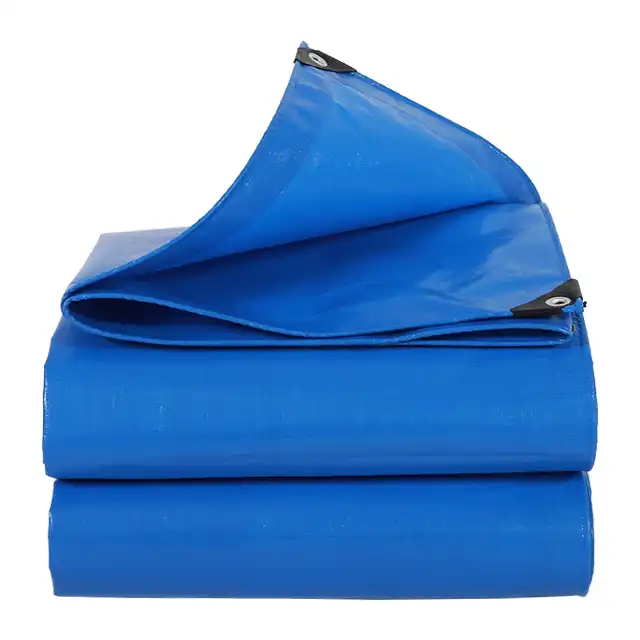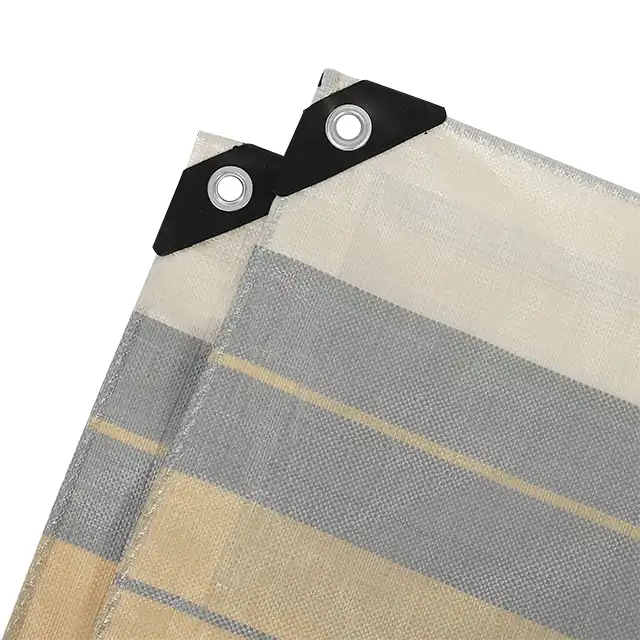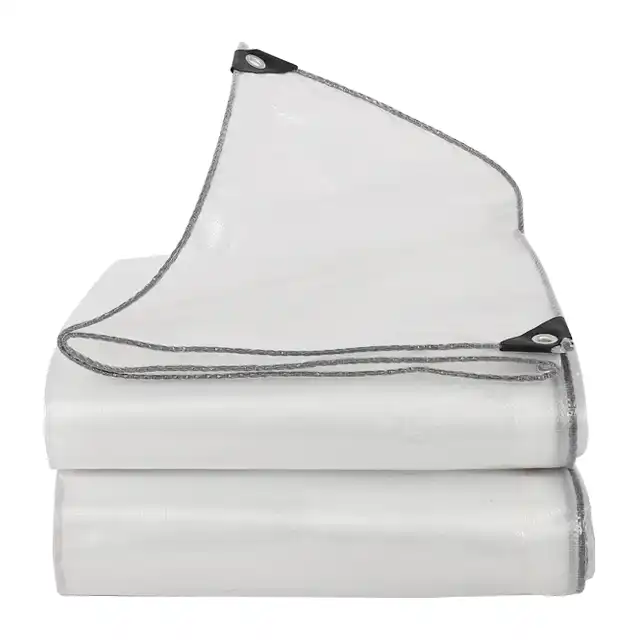Three Key Tips to Get the Best Out of Your Tarpaulin
Tarpaulins have become indispensable tools across countless industries and applications, from construction sites to agricultural operations, outdoor events to emergency shelter solutions. Whether you're investing in a vibrant red tarpaulin for high-visibility applications or selecting from any color available in the market, maximizing the performance and longevity of your tarp investment requires strategic thinking and proper implementation. The key to getting the best out of your tarpaulin lies in three fundamental areas: selecting the right specifications for your specific needs, implementing proper installation and maintenance practices, and understanding the advanced features that modern PE tarpaulins offer. These considerations will not only ensure optimal performance but also provide exceptional value for your investment while meeting the demanding requirements of professional applications.
 Tip 1: Choose the Right Specifications and Materials for Maximum Performance
Tip 1: Choose the Right Specifications and Materials for Maximum Performance
The foundation of tarpaulin success begins with selecting the appropriate specifications that align with your specific application requirements. When considering a red tarpaulin or any colored option, the material composition plays a crucial role in determining overall performance and durability. High-density polyethylene (HDPE) woven fabric combined with low-density polyethylene (LDPE) coating creates a superior barrier that offers exceptional strength and weather resistance. This dual-layer construction provides the perfect balance between flexibility and durability, making it ideal for heavy-duty applications ranging from construction site protection to agricultural coverage. Weight specifications are equally critical, with options typically ranging from 200gsm to 380gsm depending on your specific needs. For standard outdoor applications, a 280gsm red tarpaulin offers excellent durability while remaining manageable for installation and repositioning. However, extra heavy-duty applications may require weights up to 380gsm, particularly when dealing with harsh environmental conditions or extended exposure periods. The mesh count, typically ranging from 10x10 to 18x18, directly impacts the fabric's tear resistance and overall structural integrity. Higher mesh counts provide superior strength but may increase weight and cost considerations. Thickness measurements, ranging from 20 to 24 mil, significantly influence the tarp's resistance to punctures and environmental wear. Thicker materials offer enhanced protection but require careful consideration of flexibility requirements for your specific application. UV treatment levels, available from 1% to 7%, provide crucial protection against harmful solar radiation that can cause premature fading and material degradation. This treatment is particularly important for red tarpaulin applications where color retention is essential for visibility and aesthetic purposes. Professional manufacturers utilize advanced UV stabilizers that maintain color integrity while providing long-term protection against environmental exposure.
Tip 2: Master Proper Installation and Maintenance Techniques
Proper installation techniques are fundamental to maximizing tarpaulin performance and extending service life significantly. Begin by ensuring the installation surface is clean and free from sharp objects that could puncture or damage your red tarpaulin during deployment. The inherent tear-resistant properties of quality PE tarpaulins provide excellent protection, but proper surface preparation eliminates unnecessary stress points that could compromise long-term durability. When working with larger dimensions, particularly those approaching the maximum 5.1-meter roll width available from professional manufacturers, coordinated installation by multiple personnel ensures even tension distribution and prevents localized stress concentrations. Securing methods require careful attention to both immediate stability and long-term performance. High-quality grommets or reinforced attachment points should be utilized at regular intervals, typically spaced no more than three feet apart along all edges. This spacing provides optimal load distribution while accommodating natural material expansion and contraction cycles. The waterproof characteristics of modern tarpaulins perform best when proper drainage slopes are maintained, preventing water accumulation that could stress seams and attachment points over time. Regular maintenance practices significantly extend tarpaulin service life and maintain optimal performance characteristics. Monthly inspections should focus on identifying early signs of wear, particularly around attachment points and high-stress areas. The anti-corrosion properties of quality materials provide excellent resistance to environmental degradation, but proactive maintenance prevents minor issues from developing into costly replacement situations. Cleaning procedures should utilize mild detergents and avoid harsh chemicals that could compromise the material's waterproof coating or UV protection properties. When storing red tarpaulin materials between uses, ensure complete drying to prevent mold or mildew development, and store in cool, dry environments away from direct sunlight when possible.
Tip 3: Leverage Advanced Features and Professional Quality Standards
Modern tarpaulin technology incorporates numerous advanced features that significantly enhance performance across diverse applications. The 100% waterproof guarantee provided by professional-grade materials stems from advanced lamination processes that create seamless barriers against moisture infiltration. This complete waterproof protection makes red tarpaulin ideal for applications ranging from truck covers and equipment protection to specialized aquaculture applications where water containment is critical. The shrink-proof characteristics ensure dimensional stability across temperature variations, maintaining proper fit and tension regardless of environmental conditions. Arctic flexibility represents a crucial advancement for applications in challenging climatic conditions. This feature allows tarpaulins to maintain flexibility and handling characteristics even in extremely cold temperatures, preventing cracking or brittleness that could compromise protective capabilities. Anti-freezing properties work in conjunction with arctic flexibility to ensure reliable performance throughout winter conditions, making these materials suitable for year-round outdoor applications without seasonal replacement requirements. Professional quality standards, including ISO 9001:2015 certification, provide assurance of consistent manufacturing processes and material quality. Third-party testing laboratory results validate performance claims and ensure materials meet or exceed industry standards for strength, durability, and environmental resistance. The monthly production capacity of 4000MT from established manufacturers demonstrates the scale and consistency required for large-scale commercial applications while maintaining stringent quality control throughout the production process. Customization capabilities allow for precise matching of tarpaulin specifications to specific application requirements. Whether requiring specialized dimensions, custom colors beyond standard red tarpaulin options, or enhanced UV treatment levels for extreme exposure conditions, professional manufacturers provide flexible solutions that optimize performance for unique applications. OEM and ODM services enable private labeling and specialized feature development for companies requiring unique specifications or branding requirements.
Conclusion
Maximizing tarpaulin performance requires a comprehensive approach encompassing proper material selection, professional installation practices, and leveraging advanced manufacturing features. The combination of high-quality HDPE construction, advanced coating technologies, and rigorous quality standards ensures reliable protection across diverse applications while providing exceptional value for long-term investments.
For over two decades, Linyi Shengde Plastic Co., Ltd. has established itself as a leading enterprise in the PE tarpaulin field, serving customers across more than 30 countries with unwavering commitment to quality and innovation. Our ISO 9001:2015 certified manufacturing processes, advanced research and development capabilities, and partnerships with international organizations like UNHCR, IOM, ICRC, and UNICEF demonstrate our dedication to providing solutions that exceed expectations. Whether you require standard red tarpaulin solutions or custom specifications for specialized applications, our experienced team stands ready to deliver products that meet your exact requirements with reliable quality, fair pricing, and exceptional service. Contact us today at info@shengdetarp.com to discuss how our expertise can optimize your tarpaulin solutions and ensure maximum performance for your specific applications.
References
1. Thompson, M.J. & Anderson, K.L. "Polyethylene Tarpaulin Performance Analysis: Material Science and Application Optimization." Journal of Industrial Textiles, 2019.
2. Rodriguez, C.A., Kim, S.H., & Park, J.W. "UV Degradation Resistance in Heavy-Duty Polyethylene Covers: A Comparative Study." Materials Protection Research, 2020.
3. Bennett, R.D. & Wilson, P.G. "Installation Best Practices for Commercial Tarpaulin Systems: Engineering Perspectives on Longevity and Performance." Construction Materials Today, 2021.
4. Foster, A.M., Chen, L.X., & Davies, N.P. "Weatherproofing Technologies in Modern Tarpaulin Manufacturing: Advanced Coating Systems and Performance Metrics." Polymer Engineering Science, 2022.
